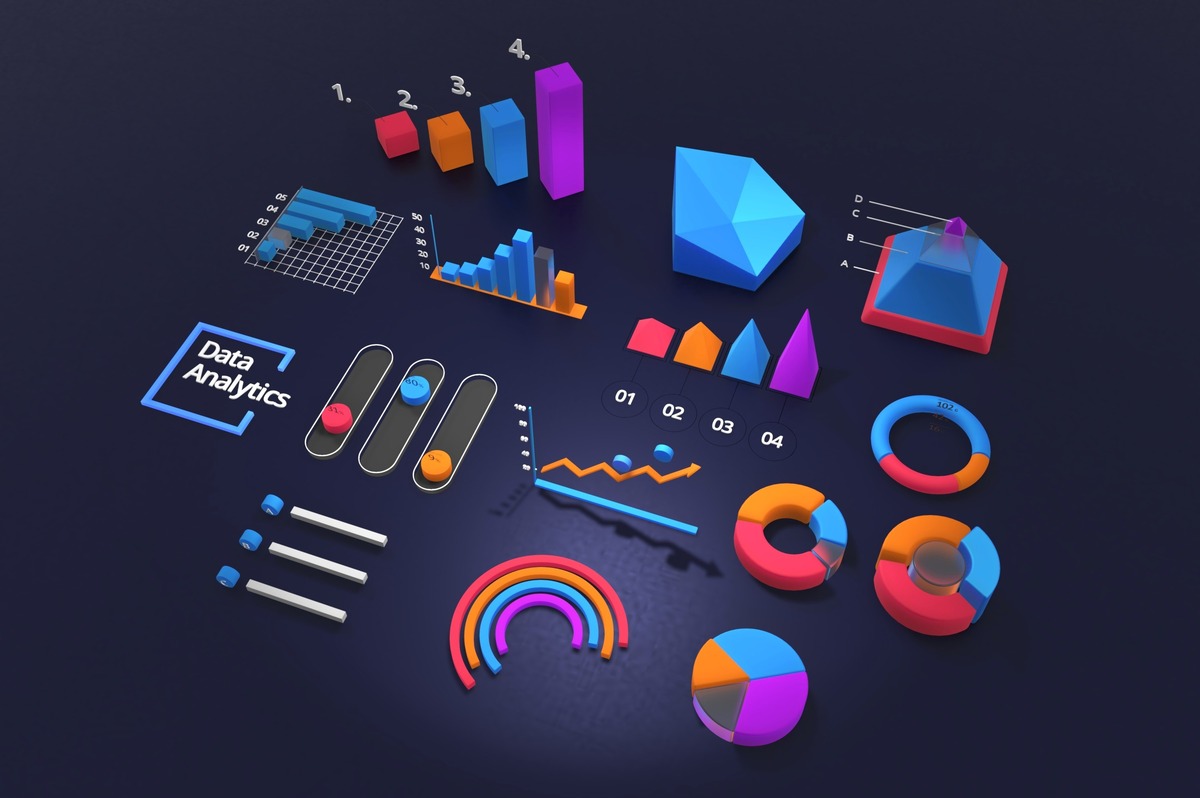Decoding the Role of Data-Driven Recruitment

September 15, 2023
Data-driven recruitment transcends traditional hiring methods, providing more than just filling vacancies. It focuses on strategic and informed decision-making to yield remarkable results. Think of it as an insightful compass, guiding companies to discover talent that aligns perfectly with their unique needs and culture.

Navigating the modern recruitment landscape can be a daunting task. Amidst a talent pool teeming with potential, finding the perfect fit for your business often feels akin to finding a needle in a haystack. Companies grapple with mounting pressures to expedite hiring processes while ensuring they onboard top-tier talent that aligns with their business objectives.
If this struggle sounds all too familiar, then data-driven recruitment could be the game-changing solution you’ve been searching for. We’ll uncover the importance of data in recruitment, explore the benefits of being data-driven, and reveal how you can leverage these strategies to elevate your talent acquisition.
Understanding data-driven recruitment
At its core, data-driven recruitment is a strategic approach to talent acquisition that leverages data to make informed decisions. The data used can come from various sources, such as applicant tracking systems, candidate assessments, social media, and recruitment analytics tools. By interpreting and applying these insights, organizations can streamline their recruitment processes, enhancing efficiency, and accuracy.
The relevance of data-driven recruitment in today’s digital age is profound. As the adage goes, “What gets measured, gets managed.” By quantifying aspects of recruitment, such as candidate qualifications, experiences, and cultural fit, organizations can manage their talent acquisition more effectively, one of the major focuses of our executive search services.
The benefits of using data to inform recruitment decisions and strategies are manifold:
- Improved efficiency: A data-driven approach helps identify bottlenecks in the recruitment process, reducing time-to-fill and cost-per-hire.
- Better quality of hires: Leveraging data enables organizations to identify candidates who are most likely to succeed in the job and fit into the company culture.
- Reduced bias: Data provides an objective basis for decision-making, minimizing unconscious bias and promoting diversity.

Why is data-driven recruiting important?
Data-driven recruiting presents an intriguing blend of technology and human intuition, setting a new standard for recruitment practices. But why exactly is this approach so important? Let’s figure out how it can lead to enhanced decision-making and improved talent acquisition outcomes.
Informed decision-making
In a vast sea of applicants, how do you pinpoint the right fit for your organization? Data-driven insights are the compass guiding this journey, embodying the benefits of being data-driven. They enhance decision-making throughout the recruitment process. Data also helps enable recruiters to transition from relying on gut feelings to making informed decisions based on hard facts and figures.
Data can be strategically utilized to accurately evaluate candidate fit, predict job performance, and significantly reduce bias. For instance, by analyzing data from skill assessments, you can help determine a candidate’s potential, while data from personality tests can provide rich insights into a cultural fit. Embracing the benefits of being data-driven means adopting an approach where recruiters ensure their decisions are grounded in evidence, leading to more confident, effective, and successful hiring.
Enhanced recruitment outcomes
Embracing data-driven recruiting has a transformative impact on key recruitment metrics. A data-driven approach not only reduces time-to-fill and promotes diversity but also significantly elevates the quality of hires, paving the way for superior data-driven talent acquisition.
A well-structured, data-driven recruitment strategy shifts hiring processes from being reactive to predictive proactive. Organizations can identify patterns in historical data to forecast hiring needs and refine recruitment strategies, thereby improving talent acquisition results. For instance, the power of data might reveal that certain sourcing channels consistently yield higher-quality candidates. Armed with this knowledge, organizations can focus their efforts on these productive channels and still yield reasonable results.

Key components of data-driven recruitment
The goal of data-driven recruitment isn’t just to accumulate vast amounts of data but to transform this data into meaningful, actionable insights that guide your hiring decisions.
Data sources and metrics
When it comes to data sources in recruitment, there’s a veritable treasure trove of information at your fingertips. Some key data sources include:
- Applicant tracking systems (ATS): An ATS is a digital repository of candidate data, capturing information throughout the recruitment process. It provides insights into applicant demographics, qualifications, and interactions.
- Candidate assessments: Psychometric and skills assessments yield quantifiable data on candidate competencies, personality traits, and potential fit within your organization.
- Job postings and applications: These can provide valuable data about candidate pool size, qualifications, and diversity.
- Social media and job boards: These platforms offer rich data on candidate behavior, preferences, and market trends.
To harness the power of data-driven recruitment, we need to zero in on relevant metrics. Key metrics include time-to-fill, quality of hire, and diversity indicators. Each offers a unique lens to scrutinize your hiring process, shedding light on efficiency, effectiveness, and inclusivity.
Analyzing and interpreting data
Data collection is only the beginning of your data-driven recruitment journey. It’s like finding the key to a treasure chest; the real value lies in what you do next. Analyzing and interpreting recruitment data are the crucial steps that transform raw numbers into actionable insights.
Strategies for effective data analysis can vary based on your organization’s goals and resources. However, some universally applicable methods include:
- Descriptive analysis: This basic form of analysis helps understand past performance by summarizing data into useful information.
- Predictive analysis: Leveraging machine learning algorithms, predictive analysis helps forecast future outcomes based on historical data.
- Prescriptive analysis: This advanced approach recommends actions based on the outcomes of descriptive and predictive analyses.
A robust data analysis process can help gain insights into sourcing channels, candidate profiles, and hiring outcomes. For example, it can reveal which channels yield the highest-quality candidates or predict which candidates are likely to perform best in specific roles.
Implementing data-driven recruitment strategies
Knowing the “why” and “what” of data-driven recruitment, let’s now delve into the “how”. Implementing data-driven strategies is akin to assembling a high-performance car: you need both the right parts (data and metrics) and a well-oiled team working in harmony towards a common goal.
Building a data-driven culture
The journey towards data-driven recruitment begins with a shift in mindset. It’s about fostering a culture where decisions are made not on hunches or gut feelings, but on solid, empirical evidence. Here are a couple of ways to cultivate this data-driven culture within your recruitment team:
- Encourage data literacy: Make sure your team understands the importance of data in recruitment, its benefits, and how to interpret it. Provide training if necessary.
- Promote data utilization: Empower team members to use data in their decision-making processes. This will not only improve their performance but also create a sense of ownership and responsibility.
- Institute continuous improvement: Using data for continuous improvement is like driving on an open road. The more data-driven your recruitment process, the more you’ll learn about what works and what doesn’t, and the smoother your journey will be.
Leveraging technology and tools
As the importance of data in recruitment rises, so does the role of technology. Here are some tools to turbocharge your data-driven recruitment strategies:
- Applicant tracking systems (ATS): ATSs are the backbone of any data-driven recruitment strategy, helping to gather, organize, and analyze candidate data.
- Recruitment analytics tools: These tools go beyond the capabilities of an ATS, providing deeper insights into your recruitment process. They can help predict trends, analyze sourcing channels, and measure key performance metrics.
- AI and machine learning tools: These advanced technologies can enhance your data-driven strategies by predicting candidate fit, forecasting hiring needs, and improving overall recruitment outcomes.
Conclusion
Remember, the future of recruitment is not based on gut feelings or guesswork; it’s driven by data. The race is on, and those who harness the power of data-driven recruitment strategies will lead the pack, finding the best talent quickly and efficiently. It’s like finding the North Star in the vast recruitment sky, guiding us to make informed decisions and unearth golden talent. But it’s not just about using data; it’s about embracing a data-driven culture, continuously improving, and leveraging technology to optimize recruitment outcomes.
For organizations looking to further optimize their recruitment outcomes, recruitment process consulting services can provide expert advice and strategies tailored to businesses’ specific needs.




